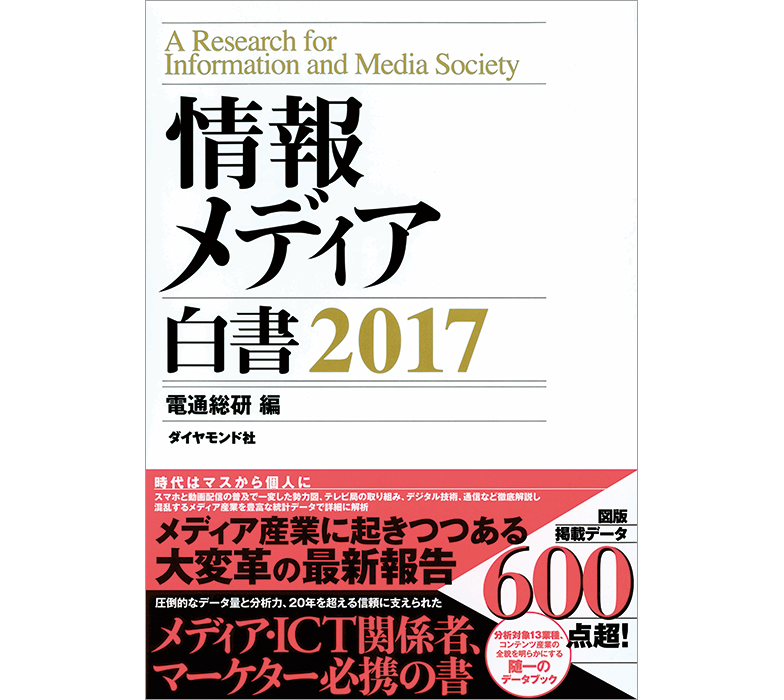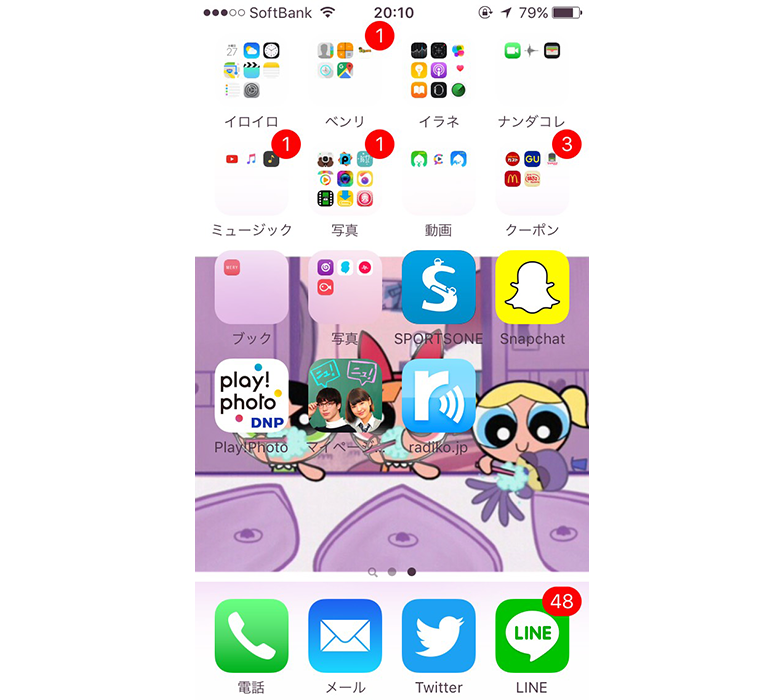The "Information Media White Paper 2017" was published on February 16. We present the opening feature "The Future of Video Services" from this book in a five-part series. It looks back on the history of Japan's video culture and business, examines the field from the perspective needed today, and envisions its future. This feature is based on insights from original research by DENTSU SOKEN INC.'s Media Innovation Research Department.


Part 1: "Video Communication Among the Smartphone Native Generation." This part focuses on the "visual communication" of the younger generation, also known as smartphone natives.
1.Visual Communication: From Photos to Videos
In recent years, alongside the proliferation of smartphones, the information behaviors of younger generations—using photos and videos to convey messages and share/spread their experiences and opinions—have become increasingly prominent. The author has captured this trend under the keyword "visual communication" and conducted research since 2015.
This shift stems from the fact that smartphone ownership is now virtually universal among young people, creating a networked environment where constant connection and communication are the norm. The communication landscape for smartphone users has undergone a qualitative change, bringing the next phase of SNS into focus.
Specifically, the visual communication of the smartphone-native generation is being reorganized around video as its core. Analyzing this current state, we derived the keyword "ES-M-L for the Video Era" (Ephemeral/Short-Moru-Live) from our research findings.
This paper focuses on the "Moru" (Processing) aspect of ES-M-L, examining the usage patterns of processing apps and the cutting-edge video filter functions they offer.
2.The Growing Importance of "Processing: Moru"
In contemporary visual communication, the weight of "processing" has become very significant alongside "shooting," "sharing," and "saving." These now form an inseparable single process.
The nature of digitized photos lies not only in their ease of storage and transmission but also in their manipulability. Editing is essentially image manipulation, yet unlike shooting or sharing, the act itself is enjoyable. This inherent appeal has fueled the recent maturation of editing culture.
Let's examine the app usage of the high school students who participated in our survey through screenshots of their smartphones. In addition to two dedicated photo app groups, a dedicated video app group has been created. As mentioned at the outset, this suggests the growing importance of video.

Furthermore, the photo group contains over 20 apps! It's clear that many of these are specifically for editing purposes.

The number of video editing apps will likely increase going forward. Interviews also revealed that students meticulously differentiate their usage based on factors like each app's functionality, design aesthetics, and overall vibe.
3.2017: Focus on Video Filters!
Among these editing technologies, the key topic to watch now is video filters. Video filters refer to filter functions that automatically recognize and mask faces when they appear in the app's camera. Overseas, they are called various names like live filters or video filters, and there is no unified term yet.
A prime example of video filters is the recent viral trend of people sporting "dog faces" edited with Snapchat, flooding social media. Snapchat is a globally popular messaging app, particularly in North America, which established a communication style centered around exchanging photos and videos enhanced with filters, especially among younger users.
One reason for its explosive popularity was that it allowed users to subtly enhance their appearance while implying they were just playing with the app. Features like adding dog ears and noses via facial recognition, or a tongue appearing when opening the mouth, enabled natural self-embellishment. This allowed users to express a "cute version of themselves" externally without hesitation or concern for others' reactions, making it easily adoptable for relationship-sensitive younger demographics.

Using Snapchat's dog video filter
The key point is that a chain of imitation occurred on the internet, with one user posting, then another user seeing it and posting, and so on. This can be considered a phenomenon of "simulacra" (copies without originals).
Let's refer to the data from the survey. The usage rates of representative visual communication apps that are currently gaining popularity, especially among young people, are as follows.

The usage rate of major SNS sites with active visual communication, such as Instagram, Facebook, and Twitter, is still high, but what is eye-catching is that Snapchat is also used by about one in four people.
Snapchat is an "instant messenger app that automatically deletes sent text, photos, and videos." When you launch the app, the camera screen immediately pops up. This can be interpreted as the UI (User Interface: the mechanism/design that enables information exchange between the app and the user) itself encouraging communication through taking photos and videos, as the app's name suggests.
The high usage rates of increasingly popular apps like SNOW and LINE Camera can also be seen as characteristic of visual communication in Japan.
Surprisingly, when responses to the same question were limited to females aged 15-19, not only did usage rates for Snapchat and MixChannel increase, but both SNOW and LINE Camera recorded astonishing usage rates exceeding 80%, doubling the overall average.
This data strongly supports the argument that visual communication and editing cannot be considered separately.

In today's information environment, where visual communication thrives, it might now be said that "the selfie is a medium." Selfies processed with video filters convey the present self, communicate some message to others, and share the emotions of that moment.
Research also indicates that among popular SNS platforms like Instagram and Snapchat among younger generations, features like "video recording capabilities" and "editing and processing functions" are cited as key strengths. The ability to become a content creator oneself, and the platform's support for this, have become essential requirements.
The edited online self captured in a selfie is similar yet distinct from the offline self, yet among the smartphone-native generation, this discrepancy seems to be met with little sense of contradiction.
Rather than viewing the split between their present self and the self represented and circulated through visual communication as problematic, they seem to accept and actively enjoy the fluidity and expansion of their identity—a mentality that could be expressed this way. Moru will likely remain an indispensable perspective for analyzing users' information behaviors.
Survey Overview
DENTSU SOKEN INC. Media Innovation Research Department
"Survey on Visual Communication Among Young People"
Research Companies: ①Graffiti Inc. / ②Video Research Ltd.
Survey Period: ① April & November 2016 / ② October 2016
Survey Method: ① Group/Depth Interview Survey / ② Web Survey
Sample Composition: ① 15 males and females aged 17-21 residing in the Tokyo metropolitan area
② 1,600 men and women aged 15-34 nationwide
※② is screened based on the usage condition: "Posts (including shares) on at least two of Instagram, Facebook, Twitter, or Snapchat once a week or more."
※Includes sharing)

Topics introduced from the "Mass Media" section table of contents in the chapter "Trends in the Information Media Industry."
For detailed data and the full version of the analysis, please refer to the book 'Information Media White Paper 2017'.
Newspaper Edition: "Lunchtime" Emerges as a New Reading Opportunity
~The 12:00 PM hour holds promise as a testing ground for special features and video services leveraging the functionality and characteristics of digital editions~
Publishing Edition: Magazines See Growing Digital Distribution and Subscriptions
~Even Newsweek Japan, which has many subscriptions, is seeing an increase in digital edition circulation~
Radio & TV Edition: Industry-Wide Challenge is "Responding to Online Media and Next-Generation Broadcasting"
~Particular focus is on: ①4K/8K readiness, ②developing new business models, ③online distribution of programs/content~
Satellite Broadcasting/Cable TV Edition: Commercial BS broadcasting is growing
~ Diversification of programming, including sports, music, movies, and information programs, is driving increased advertising from various companies
has increased, driving growth.










